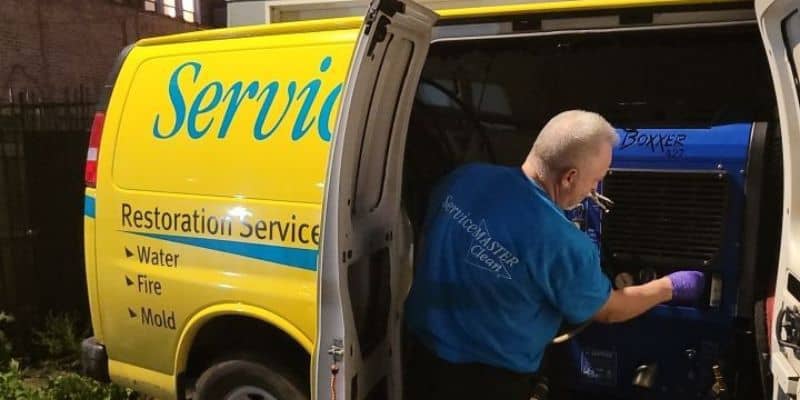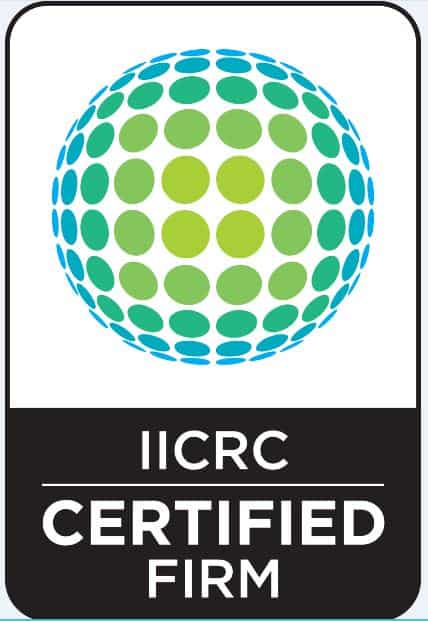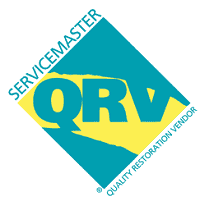As homeowners, we’re used to rainy weather – but we never get used to the water damage caused by blocked gutters, especially when it spreads inside the house.
Every rainy season, ServiceMaster of Lake Shore in Chicago, IL takes care of interior water damage caused by leaking gutters.
We want you to know what to look for, how to deal with the damage and how to prevent gutter overflows.
Read on.
Key Takeaways
- If water has leaked into your home due to clogged gutters, first contact your insurance company, document the damage, clear affected areas, and start the drying process. Reach out to restoration professionals such as ServiceMaster of Lake Shore to address the water damage and begin the restoration process: 312-707-8597
- Signs of water damage due to clogged gutters include attic problems, ceiling leaks, discolored walls, damp carpets, musty smells, wet window frames, and humid basements.
- To prevent clogged gutters you should weather-check the gutters, ensure downspouts are clear, trim nearby trees and shrubs, and consider the installation of a leaf protection system.
7 Signs of Water Damage Due to Blocked Gutters

When a clogged gutter fills and spills, it sends water cascading down your home’s exterior. The heavy flow can back up under the roofline and permeate interior walls.
The damage might not be obvious right away, but eventually, you’ll see clues. Be on the lookout for these seven signs that your gutters are leaking water into the house.
1. Attic Problems
Gutter blockage can push rain water beneath your roof’s underlayment, resulting in leaks in the attic.
Wet rafters and joists, cracks under roof joins and damp insulation are sure signs of attic leaks or burst pipes.
2. Ceiling Leaks
Clogged gutters can cause ceiling leaks too. Accumulated water in the attic seeps downward through the ceiling, leaving dark spots, ring-like stains and loose tiles.
3. Discolored Walls
When heavy rain floods backed-up gutters, the overflow can spill between exterior and interior walls.
Signs of excess damp in the walls can include streaks and stains, peeling paint or wallpaper, and patches of mold.
4. Damp Carpets
Damp carpets adjacent to exterior walls may be clues to clogged gutters.
As moisture spreads down through wall materials, it seeps into carpet fibers, especially in corners. You may also see discoloration on baseboards.
5. Musty Smells
Musty smells are often signs of water damage caused by gutter leaks inside walls. The unpleasant odor of wet wood framing, drywall and insulation usually indicates mold growth in the materials too.
6. Wet Window Frames
If the frames around windows seem wet after a heavy rain, it could be due to water overflowing gutters and dripping into wall cavities.
You might notice streaky window glass and damp sills. Door frames may be affected too.
7. Humid Basements
Leaking gutters soak the ground around your home’s foundation, leading to water damage, and that can impact the basement.
High humidity, efflorescence and mold are all signs of problems downstairs caused by faulty gutters on the roof.
5 Steps to Take After Water Damage Due to Clogged Gutters

When flooded gutters push water inside the house, the aftermath usually extends beyond one area. You’re dealing with water damage in multiple rooms, but where do you start?
We recommend these five steps that make it easier to recover from clogged gutter leaks.
1. Contact Your Insurance Company
Call your homeowners insurance agent first.
Explain the situation, and set up an appointment for an adjuster’s inspection. You want to get the claims process started as quickly as possible.
Power Tip: Keep notes detailing your communication with the insurance company, including names and dates.
2. Contact Restoration Professionals
Leaking gutters can spread interior water damage behind walls and overhead in ceilings.
Contact an experienced restoration company that handles everything, from water mitigation to mold remediation.
Don’t forget water-damaged furnishings and personal items.
Power Tip: Keep the documentation organized so that you can use it to support your insurance claim.
3. Record the Damage
Document all water damage caused by the clogged gutters. Take photographs and videos of stained walls, wet ceilings and affected floors. Don’t forget water-damaged furnishings and personal items.
Power Tip: Keep the documentation organized so that you can use it to support your insurance claim.
4. Clear Affected Areas
Slow down the spreading water damage by moving as much as you can out of wet areas.
If possible, relocate heavy items, such as furniture, to nearby self-storage.
Pull up area rugs, peel back soggy carpets, and clear everything out of affected cabinets and closets.
5. Begin the Drying Process
Your restoration company will set up heavy-duty drying equipment, but get a jump on this important first step.
Open doors to rooms, cabinets and closets. If the weather isn’t humid, circulate fresh air through affected areas by opening as many windows as possible.
Power Tip: Our restoration teams arrive at your door within 90 minutes of your call, so feel free to ask us for pointers on what you should or shouldn’t do.
How to Prevent Clogged Gutters

No one enjoys cleaning the gutters, but it’s your best defense against clogs and overflows. Make it a routine twice a year, and always stay safe on the ladder.
These tips can help reduce the chances of blocked gutters damaging your home’s interiors.
1. Weather-Check the Gutters
After a heavy rain, high winds or a hard freeze, check for signs of gutter damage. Inspect miters for cracks or splits.
Tug on bracket hangers to make sure they’re secure. Take care of repairs as soon as possible.
2. Don’t Forget the Downspout
When clean gutters fill up and spill over, it could be due to a blocked or damaged downspout. Inspect the elbow at the end of the spout, and remove any clogs.
Keep the splash block clear of buildup that can obstruct downspout flow.
3. Trim Trees and Shrubs
This tip is good for your gutter system and your roof.
Keep trees and tall shrubs trimmed back at least 8 feet away from your home’s exterior. You don’t want twigs and leaves to pile up in clean gutters and undo your hard work.
4. Install a Leaf Protection System
There are several types of products available that protect gutters from clogs, including systems that you can install yourself. Research different options online, and ask friends and family about their experiences installing gutter guards.
Dealing With Gutter Leaks Inside Your Chicago Home? We Can Help!
Never underestimate how many problems can result from clogged gutter leaks. It’s a type of water damage that needs to be addressed as quickly as possible.
Always know that we’re here to help with advanced equipment, industry-certified techniques and the best water damage restoration teams in Chicago.
Our ServiceMaster of Lake Shore pros are standing by 24/7, ready for your call: 312-707-8597






